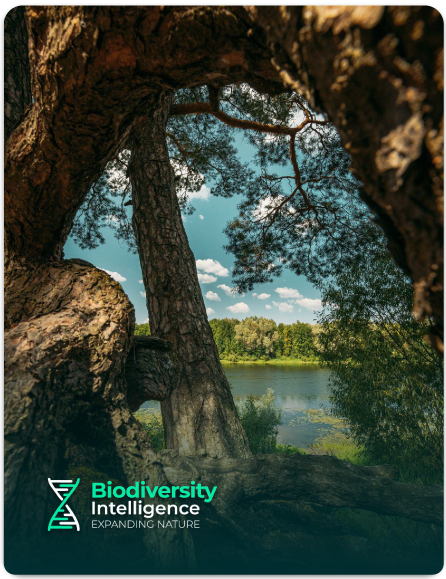


The loss of biodiversity is negatively affecting our planet and the way we live. The global agenda is taking action to promote sustainable models, paving the way towards a nature-positive economy.
The main challenge that nature markets face today is the ability to measure and monitor biodiversity accurately, efficiently, and in an integrated manner to validate increases in biodiversity. This is due to the great diversity of organisms and their interactions with the environment and climate at different spatial and temporal scales.
Currently, to approximate biodiversity, we need many experts from various disciplines and prolonged evaluation times, resulting in high costs and limited outcomes.

Satellite monitoring plans and tracks environmental changes. Remote methods classify land uses, detect changes, and generate indicators using optical and SAR data. This technology correlates biodiversity data, creates indices, and analyzes trends/anomalies for comprehensive environmental monitoring.

Our whole environment is molded by the climate conditions and is one of the main drivers of changes in ecosystems. Historical climate series give us the chance to understand the on field nature situations and be able to separate land use management projects from wider regional climate effects.

Integrating traditional ecology with eDNA, big data, and algorithms, we survey massive biodiversity from soil and water samples.
Bioinformatics pipelines analyze this data to create specific environmental indicators, boosting ecological science.

Correlating nature development with chemical/physical data links it to nature-based solutions, restoration, and agri-practices, adding value.
A biodiversity index tied to these metrics enhances project value outcomes.

Based on satellite information and project objectives, an intelligent statistic design deploys the sampling spots following our protocols for nature analysis.
We use standardized DNA methods to survey a massive biodiversity information from soil and water samples under our Bi Protocols and our own bioinformatic pipeline.
Deep Learning Integration – AI models analyze eDNA, Satellite data, and physical-chemical parameters to reveal complex ecological patterns and to ensure the right Nature Index for your project operations.
Expanding the understanding of ecosystems, species and land use for and easier decision-making processes.
An interactive dashboard will keep track of Nature, delivering transparency and precision for nature disclosure and certifications.
By uncovering hidden patterns and relationships, AI enhances biodiversity conservation, environmental policy-making, and sustainable management.
Digitalization of the data chain gives the chance to enhance transparency and precision on Nature disclosure. Standardized information protocols following the step by step of biodiversity analysis with every indicator fit to any project need leads the path to certification and trust to stakeholders.

Deep Learning Integration – AI models analyze eDNA, Satellite data, and physical-chemical parameters to reveal complex ecological patterns and to ensure the right Nature Index for your project operations.
Expanding the understanding of ecosystems, species and land use for and easier decision-making processes


Nahuel Schenone is an experienced environmental professional with over 15 years in managing projects across private and public sectors. Co-founder of an NGO focused on sustainable development, he has coordinated biodiversity initiatives and developed strategies for biodiversity, water management, and ecosystem services. He holds a Biology degree and a PhD in Sustainable Production from the University of Buenos Aires.

Esteban Avigliano is a distinguished biologist with expertise in environmental chemistry, ecology, and biodiversity restoration. He serves as a professor at the University of Buenos Aires and the Scientific Director of an Environmental NGO, highlighting his dedication to education and conservation. With over 100 publications and awards like the Burmeister and Charreau, he has made significant scientific contributions. His consultancy work further showcases his commitment to improving environmental practices.